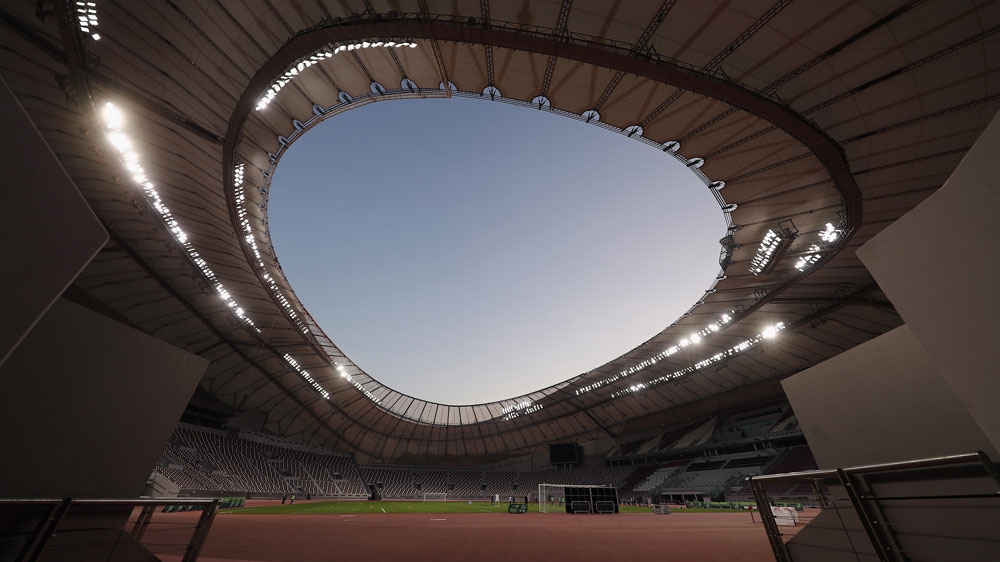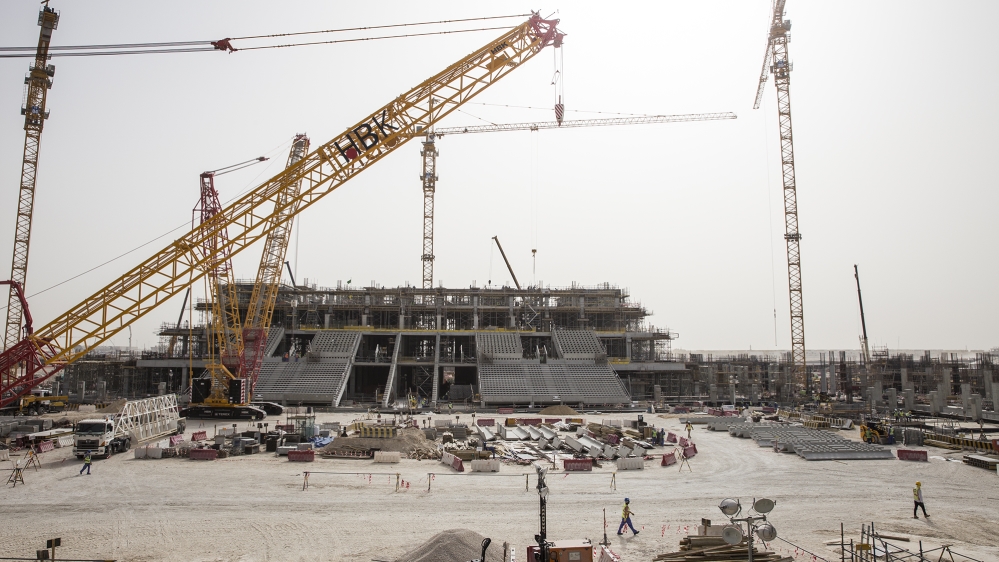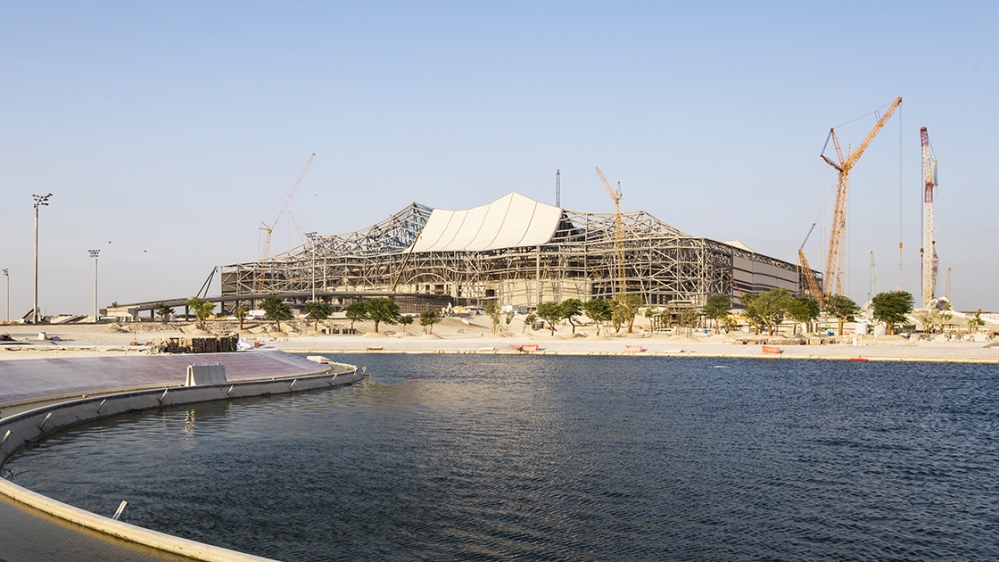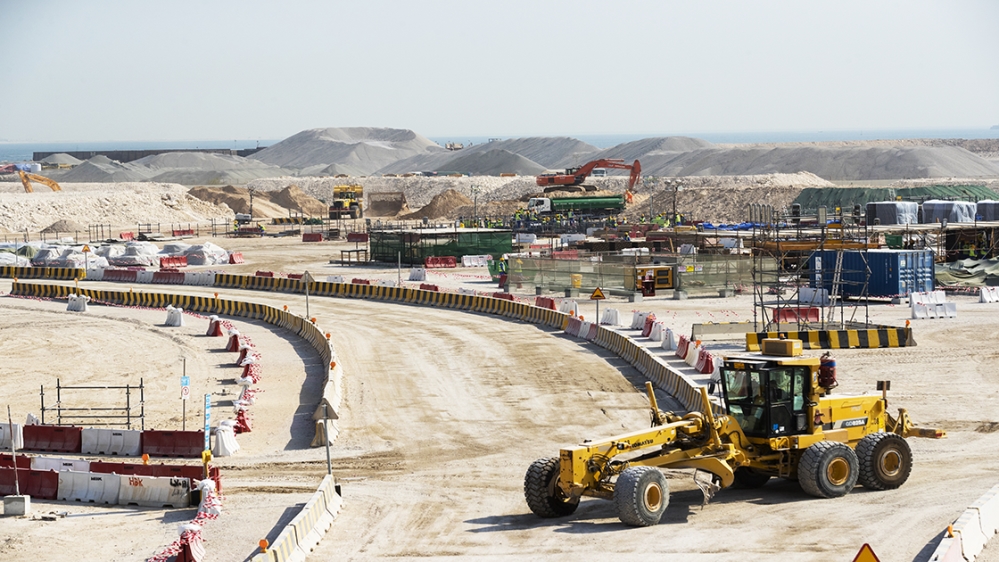Qatar 2022 World Cup stadiums: All you need to know
Months after the completion of the 2018 FIFA World Cup in Russia, all eyes are on Qatar as it prepares to host football’s mega event in 2022.
The tiny Gulf nation will be the first from the Arab world to host the World Cup, breaking with tradition with a winter kick-off as it looks to avoid the scorching summer heat.
FIFA President Gianni Infantino hailed Qatar’s progress on infrastructure during a visit to its capital, Doha, on Tuesday, after inspecting the eight stadiums and several training sites that will be used for the month-long tournament.
“You can see the progress which is being made here four years before kick-off,” Infantino said after a tour of the Al Wakrah stadium, a 40,000 capacity venue that will host matches up to the quarter-finals stage.
“The Russian World Cup was the best ever, and the World Cup in 2022 has to be even better,” he said.
“I think this World Cup is extremely important, not only for Qatar but for the whole region – a region that has a passion for football and is investing a lot in the game.”
 |
| FIFA head Infantino inspects Al Wakrah Stadium during his visit to Doha [Anadolu/Qatar 2022 Local Organizing Committee /Handout] |
Qatar beat bid rivals Australia, Japan, South Korea and the United States in 2010 to claim the hosting rights.
As it looks to open its doors to football fans and teams from around the world for its biggest sporting event since the 2006 Asian Games, the Gulf state has come under increasing scrutiny over its treatment of migrant workers.
To date, there have been three work-related fatalities and nine non-work related deaths of workers engaged in the construction of Qatar’s World Cup stadiums, according to the tournament organisers.
But the United Nations’ International Labour Organization (ILO) dismissed all complaints lodged against Qatar following a new draft bill, introducing minimum wage and legal protection for the foreign workforce, approved by the government last year.
At least 26,000 people are directly involved in the construction of the proposed stadiums.
Contractors involved in the World Cup projects have agreed to reimburse more than $14.4m to the thousands of workers who had paid recruitment fees before moving to Qatar.
Seven new state-of-the-art stadiums with advanced open-air cooling technology are being built from scratch for the 2022 event.
The eighth one, Khalifa International Stadium located next to the iconic Torch Tower, was inaugurated in May last year, after undergoing renovations and upgrades.
Meanwhile, the Supreme Committee for Delivery and Legacy (SC), which is overseeing the organisation of the 2022 World Cup, said earlier this year the Al Wakrah Stadium and Al Bayt in Al Khor will be ready by December.
“All the stadiums will be completed two years before the tournament starts,” Yasser Al Mulla, the SC’s Landscape & Sport Turf Management senior nanager, said in January.
Here is a look at the progress of the stadiums.
Khalifa International Stadium
 |
| A general view of the Khalifa International Stadium [Alex Grimm/Bongarts/Getty Images] |
The Khalifa International stadium, which was built in 1976 in Doha, is the first tournament-ready venue.
This 40,000-capacity arena has already hosted the Gulf Cup, Asian Games and the AFC Asian Cup.
 |
| A general view of the Khalifa International Stadium [Alex Grimm/Bongarts/Getty Images] |
|
WATCH: Qatar’s Khalifa stadium ready for 2022 World Cup |
Al Wakrah Stadium
Located in the southern city of Al Wakrah, this 40,000-seat stadium is “almost complete”, according to the SC, and its retractable roof is now being installed.
 |
| A view of the Al Wakrah stadium from outside [Photo courtesy of the Supreme Committee for Delivery and Legacy] |
 |
| Contruction under way at Al Wakrah stadium [Photo courtesy of Supreme Committee for Delivery & Legacy] |
Lusail Stadium
The Lusail Stadium, located in Lusail city, about 23km north of Doha, will host the opening ceremony and the final of the World Cup.
According to the SC, the concrete foundations are being laid and the seating area is under construction.
 |
| The final of the 2022 World Cup will be played at Lusail Stadium [Faras Ghani/Al Jazeera] |
Al Bayt Stadium
The Al Bayt Stadium, located in Al Khor city, has a capacity of 60,000. Its exterior, which resembles tents used in Qatar’s deserts, is half complete.
 |
| Seats for fans at the Al Bayt stadium are being produced by a local company [Photo courtesy of Supreme Committee for Delivery & Legacy] |
 |
| A computer-generated artist’s impression of the Al Bayt Stadium [Illustration provided by 2022 Supreme Committee for Delivery and Legacy/Getty Images] |
Education City Stadium
Education City stadium, on the outskirts of Doha, is right in the middle of Qatar’s leading universities.
After hosting matches up to the quarter-finals stage, the arena will be reduced in half and 20,000 seats will be donated to build stadiums in developing countries.
 |
| An overhead view of construction at the Education City stadium in October [Photo courtesy of Supreme Committee for Delivery & Legacy] |
 |
| Concrete structure of the Education City Stadium is now in place [Photo courtesy of Supreme Committee for Delivery & Legacy] |
Al Rayyan Stadium
The Al Rayyan Stadium in Qatar’s second-most populous city is being built on the site of the old Ahmed Bin Ali Stadium, previous home of Qatar’s Al Rayyan Sports Club. It will have a capacity of 40,000 seats.
 |
| A split view of Al Rayyan Stadium’s construction progress, right, and illustration after completion [Photo courtesy of Supreme Committee for Delivery & Legacy] |
|
WATCH: Qatar 2022 reveal design of fifth World Cup stadium |
Al Thumama Stadium
This 40,000 seat stadium is located 12km south of Doha’s skyline and seafront. It is an architectural depiction of the gahfiya, a traditional cap worn by Arab men.
The venue’s unique design won the Architectural Review Future Projects Award in May.
 |
| A split view of Al Thumama’s construction progress, right, and illustration after completion [Photo courtesy of Supreme Committee for Delivery & Legacy] |
Ras Aboud Stadium
To be built on the shores of the Gulf, the Ras Aboud stadium will overlook the Doha skyline in the backdrop.
This 40,000 seat venue will be completely dismantled and re-purposed for other sporting and non-sporting projects after the tournament. Its foundations are currently being laid.
 |
| Excavation under way at the Ras Aboud Stadium site [Photo courtesy of Supreme Committee for Delivery & Legacy] |
 |
| A computer-generated artist’s impression of the planned Ras Aboud Stadium [Illustration provided by 2022 Supreme Committee for Delivery and Legacy/Getty Images] |




